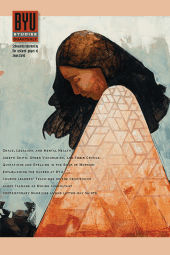The biographer of Joseph Smith’s early life will know his subject when he relies on sources that know their subject. This truism is more obvious in statement than application, for non-Mormon biography has not faced the severe limitations of the uniformly hostile affidavits taken by a sworn enemy of the Mormon Prophet. The image thus obtained is sharply discordant from the Joseph Smith documented in the 1830’s: a leader of physical prowess and vigorous manhood, a profound idealist with spontaneous humor and warmth, who displayed personal courage under tremendous odds. A similar youth in the 1820’s is discovered, not by editing out non-Mormon sources, but finding those non-Mormon sources that reflect definite contact with Joseph Smith. Such a study shows that collecting informed statements about the Prophet will produce a substantial favorable judgment.
Although initial collection of statements against Joseph Smith is an oft-told story, its outline is a necessary background for the affidavits to be analyzed. D. P. Hurlbut, excommunicated twice by LDS tribunals for immorality; became so personally vindictive that he was put under a court order restraining him from doing harm to the person or property of Joseph Smith. He was next “employed” by an anti-Mormon public committee to gather evidence to “completely divest Joseph Smith of all claims to the character of an honest man. . . .” To achieve this goal he traveled to New York and procured statements at Palmyra Village, the largest business center adjacent to the Smith farm and also at Manchester, the rural district that included “Stafford Street.” Cornelius Stafford, then twenty, later remembered that Hurlbut arrived at “our school house and took statements about the bad character of the Mormon Smith family, and saw them swear to them.”
The Painesville, Ohio, editor, E. D. Howe, replaced Hurlbut as a respectable author, and published the affidavits in Mormonism Unvailed (1834), laying the cornerstone of anti-Mormon historiography. Howe lived to see the solidity of the edifice, observing forty-four years afterward in his memoirs that the book “has been the basis of all the histories which have appeared from time to time since that period touching that people.” More accurately, Howe’s writing was insignificant, but the Palmyra-Manchester affidavits published by him have introduced Joseph Smith in every major non-Mormon study from 1834 to the present. Yet even supposedly definitive studies display no investigation of the individuals behind the Hurlbut statements, nor much insight into their community.
